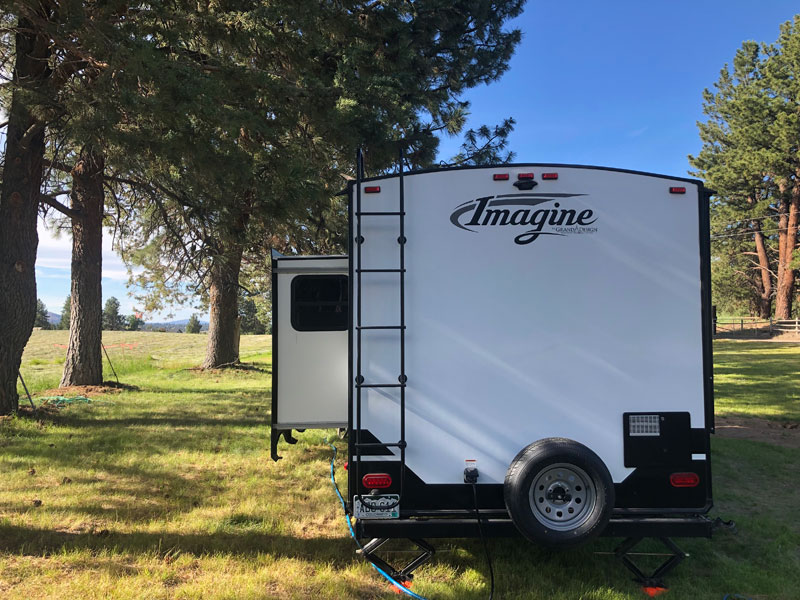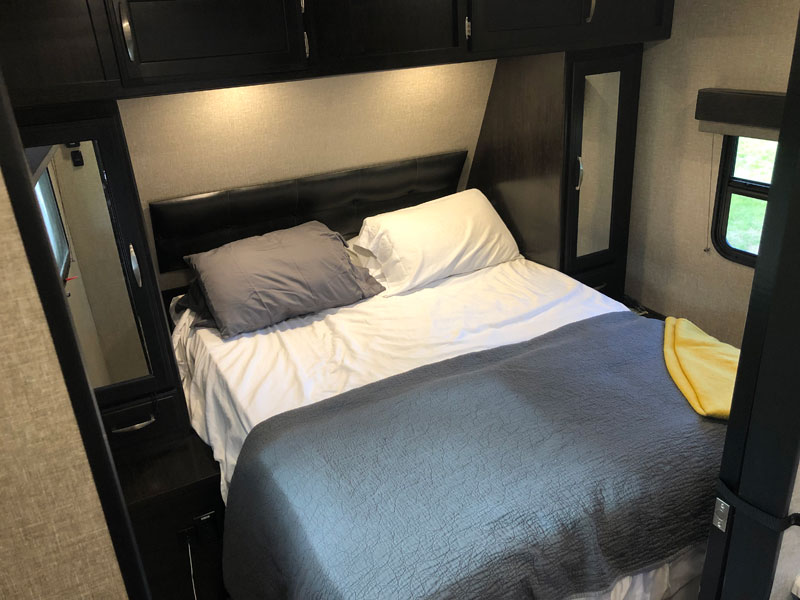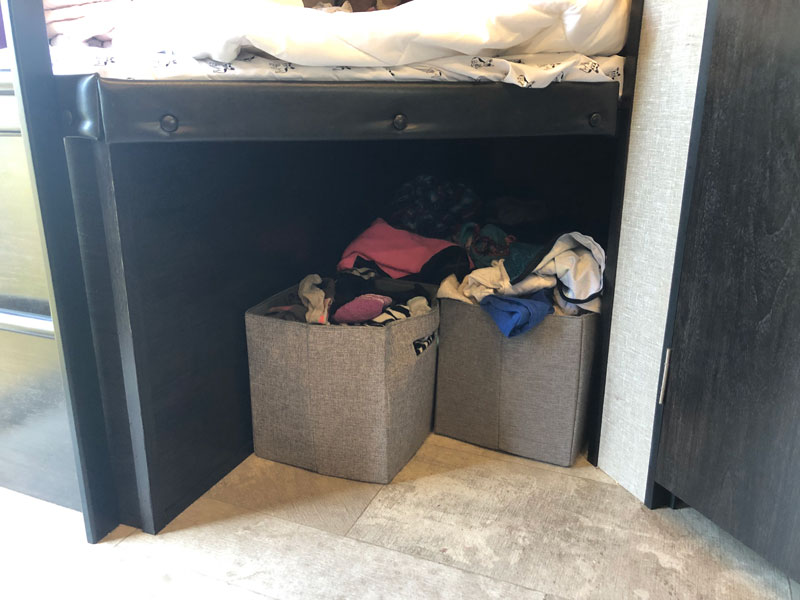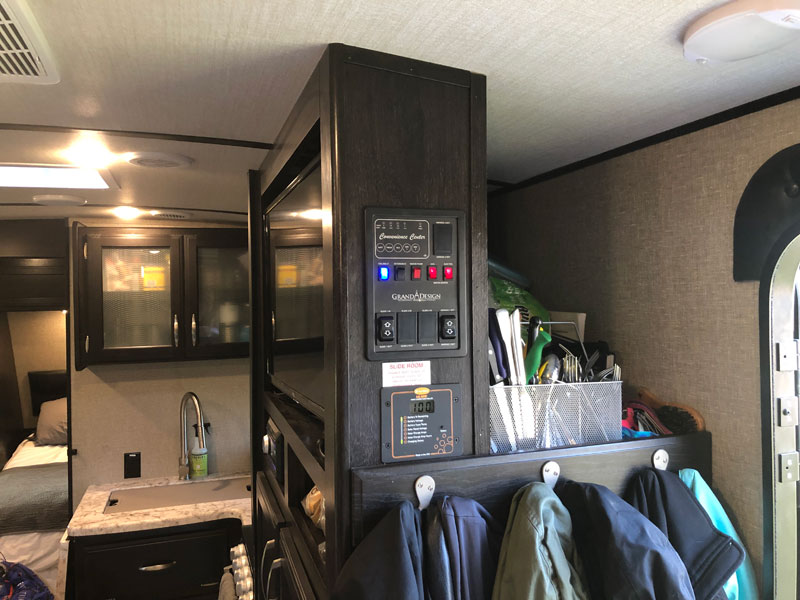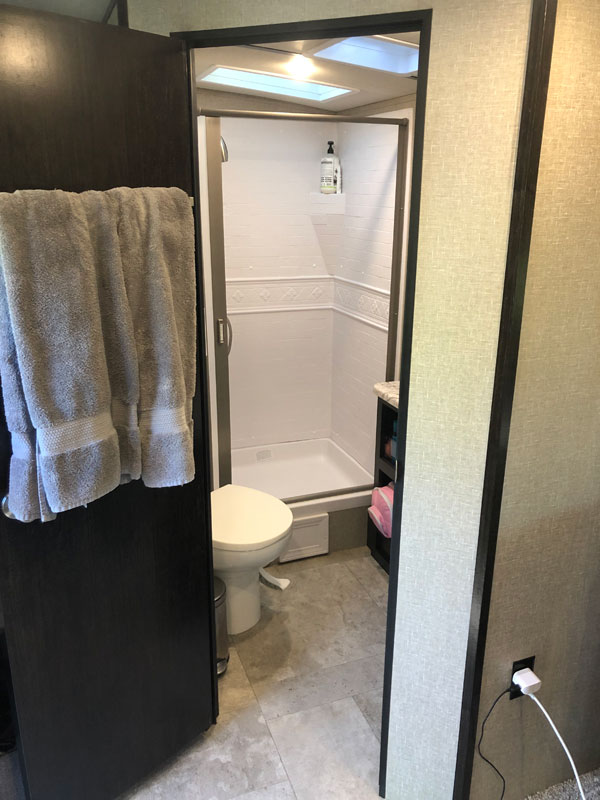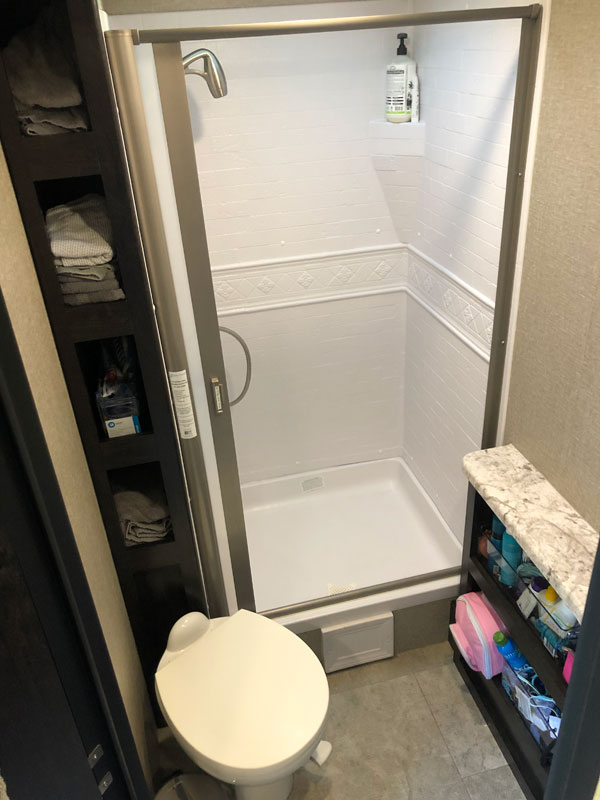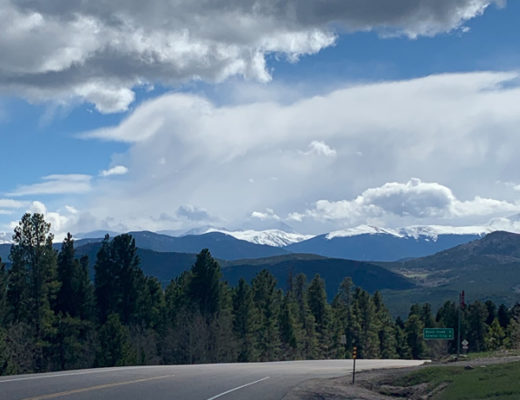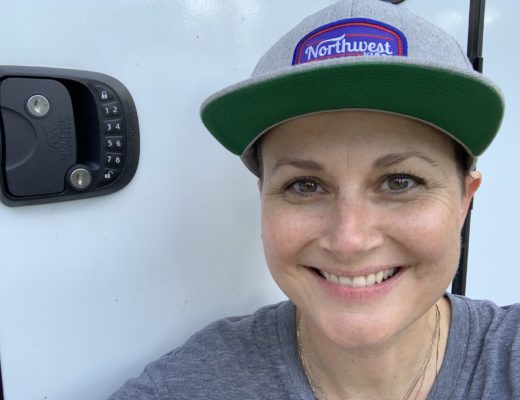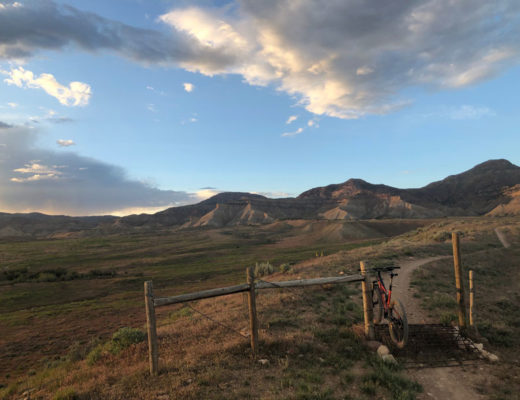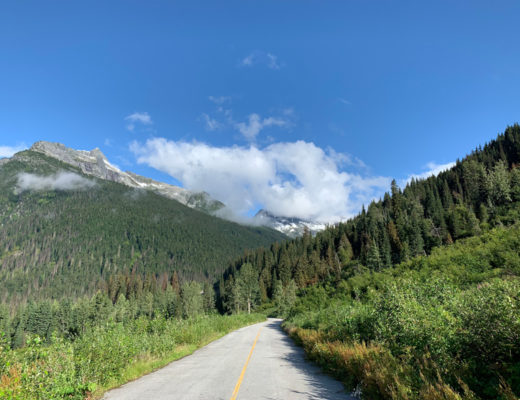The Initial Thought Process
After tent camping for many years, we had a straightforward—although broad–idea of what we did and didn’t want in our future home on wheels. We considered all the options:
- Van conversions – After taking a look at different models during RV shows and at local dealers, we decided these wouldn’t offer enough space for four humans, full-time, including schooling and business operations. Plus, there’s nothing like an indoor shower, versus always rinsing off outside.
- Fifth-wheel RVs – At the other end of the size spectrum, we felt these were too large and would limit backcountry access (and all the delicious trails that come along with it) via their narrow, washed out access roads, hairpin turns, etc.
- Motorhomes, converted buses, other non-conventional options – Outside of when moving from place to place, our goal was to remain nimble and light on our feet. Not just for quick and easy biking access, but for everyday tasks like getting groceries, doing laundry, and so forth. While these offered decent space, they were expensive and still required us to own a “regular” vehicle.
Champagne Dreams on a Beer Budget
We originally had our hearts set on the Airstream 30FB Flying Cloud, which offered a front bedroom with a queen bed and a closeable door. It also came with a two-person couch, U-shaped dinette, a shower that Derek could actually stand up in, a huge bathroom, and rear bunks for the girls.
Unfortunately, it also came with a $90,000 price tag! And based on its weight, we would have needed to purchase a one-ton pickup, which—even used—doesn’t come cheap. Its exterior storage was also somewhere near zero.
After regrouping and looking at our budget, we made the tough decision to buy a “regular” RV that offered many of the same features as the Airstream but at a more manageable cost.
Our New Home: The Grand Design Imagine 2400BH
With the help of our excellent salesperson, Len Birnbaum at Windish RV Center, we decided on the Grand Design Imagine 2400BH, which comes in at almost 29’ long, is pulled by our 2019 Tundra, and features a 5,500-pound dry weight. It has decent fresh/grey/black water tank sizes, a vast pass-through storage area up front, and modern interior finishes that—while decidedly lower end than the Airstream—look good and seem to function well.
After all, we learned at the beginning of our shopping process, “there’s Airstream, and then there’s SOB (some other brand)!” J
The 2400’s kitchen is about the same size as our last rental house in Denver, so we feel right at home, moving around each other while cooking and eating.
Ava and Olivia were involved in every part of the selection process, and while they definitely had to give up a lot of material goods in the process, they’re happy with their bunks and the amount of storage available. It seems to have everything they need for space and—at least currently—no one wants to kill each other.
The 2400 BH comes with a single slideout (something the Airstream also lacked) where the U-shaped dining area is located, which we think keeps things simple, while also significantly increasing usable space in the most trafficked area.
By RV standards, our bathroom is enormous, with a “full-size” stand-up shower, a couple of outdoor spray ports, a small outdoor kitchen, and multiple external electrical outlets. It also has exterior speakers, a built-in DVD player and TV (neither seems particularly high-quality, although they’re rarely turned on), interior USB ports, and easy-to-use controls for the gas, electric, water pump, exterior lights, awning, slideout, and checking water levels.
We lived in 700 square feet of usable space for years, and it was relatively easy to downsize our lives into, so the 2400BH represents plenty of space. And combined with its lower price, lighter weight, and the fact that we could tow it with a much less expensive truck (and one we’re much happier with long-term!), we think it was the right choice.
Now, let’s forget about the interior and start spending time outdoors!





